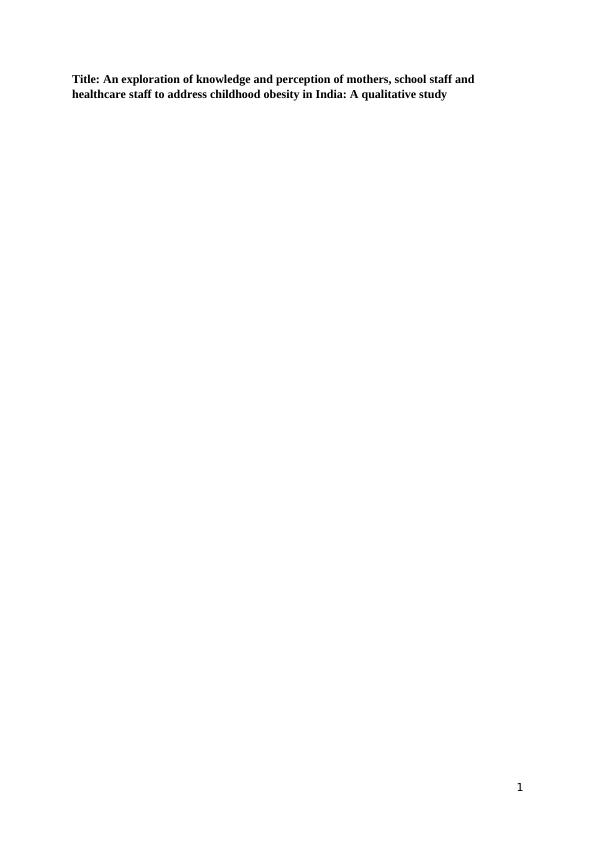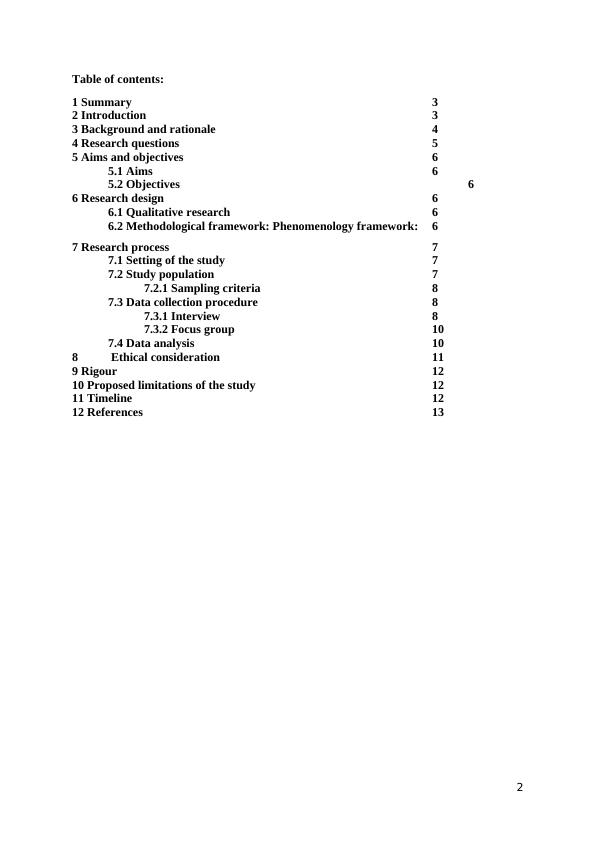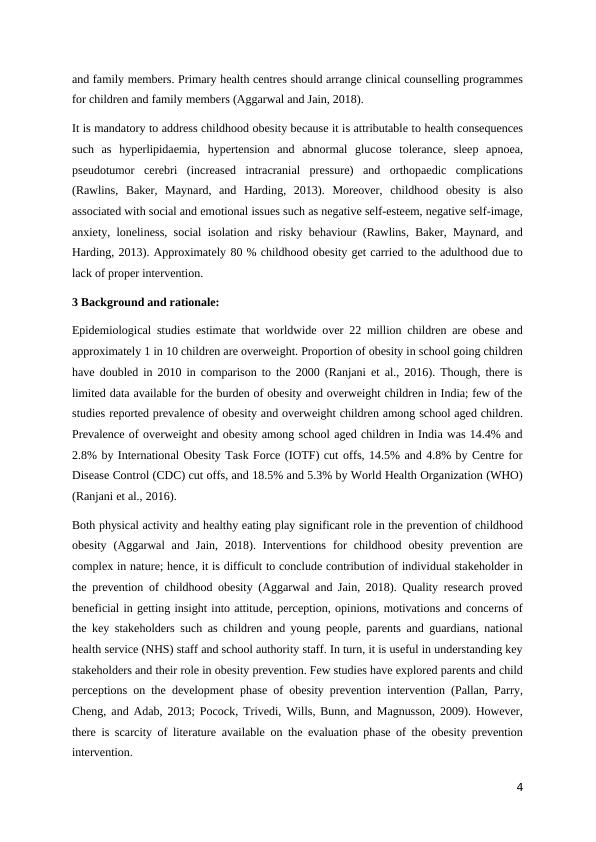Exploring Knowledge and Perception of Mothers, School Staff and Healthcare Staff to Address Childhood Obesity in India: A Qualitative Study
This assignment requires the submission of a qualitative research proposal, demonstrating knowledge and skills in qualitative research methodology.
19 Pages6052 Words376 Views
Added on 2022-10-02
About This Document
This research aims to explore the knowledge, attitude and perception of mothers, school staff and healthcare staff about childhood obesity. This is a qualitative study which adopts constructivist theory as the main methodological framework. Participants of this study will be mothers of children (4-14 years), school staff and healthcare staff. These participants will be from the rural part of India and this study will be carried out at Primary Health Centre (PHC). This study will implement interview and focus method for data collection and thematic analysis for data analysis.
Exploring Knowledge and Perception of Mothers, School Staff and Healthcare Staff to Address Childhood Obesity in India: A Qualitative Study
This assignment requires the submission of a qualitative research proposal, demonstrating knowledge and skills in qualitative research methodology.
Added on 2022-10-02
ShareRelated Documents
End of preview
Want to access all the pages? Upload your documents or become a member.
Childhood obesity is an indicator of adulthood
|19
|5028
|31
Childhood Obesity in New Zealand - Doc
|41
|3961
|35
Causes, Effects and Prevention of Obesity
|40
|9166
|447
Prevention of Childhood Obesity: Pamphlet
|7
|852
|26
Public Health Promotion Plan for Prevention of Obesity in Primary School Children
|14
|3690
|39
Impact of Infant and Young Child Feeding (IYCF)
|18
|4550
|50




